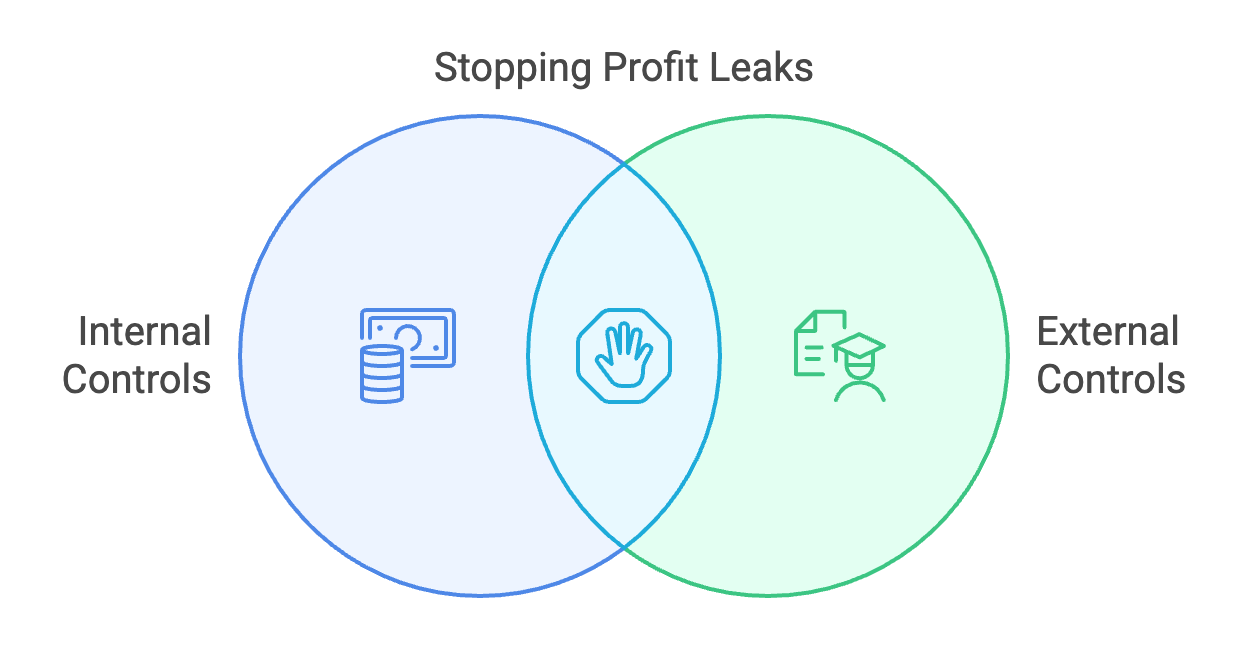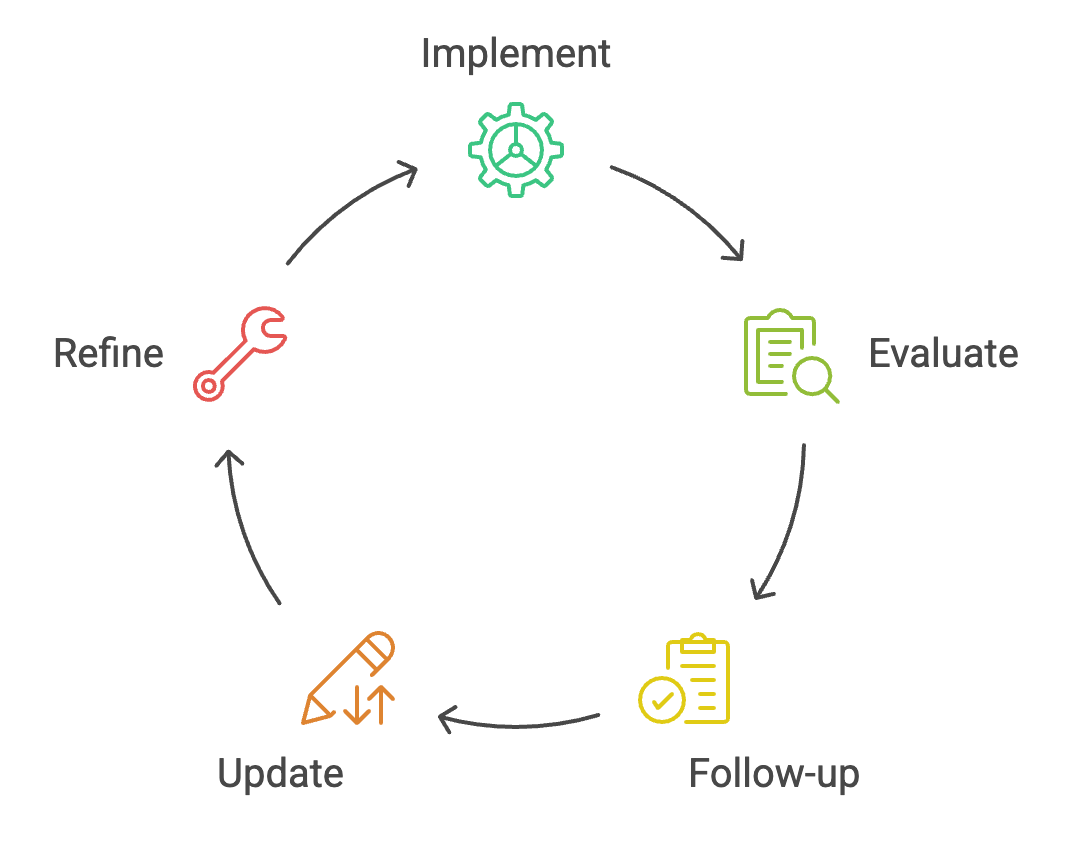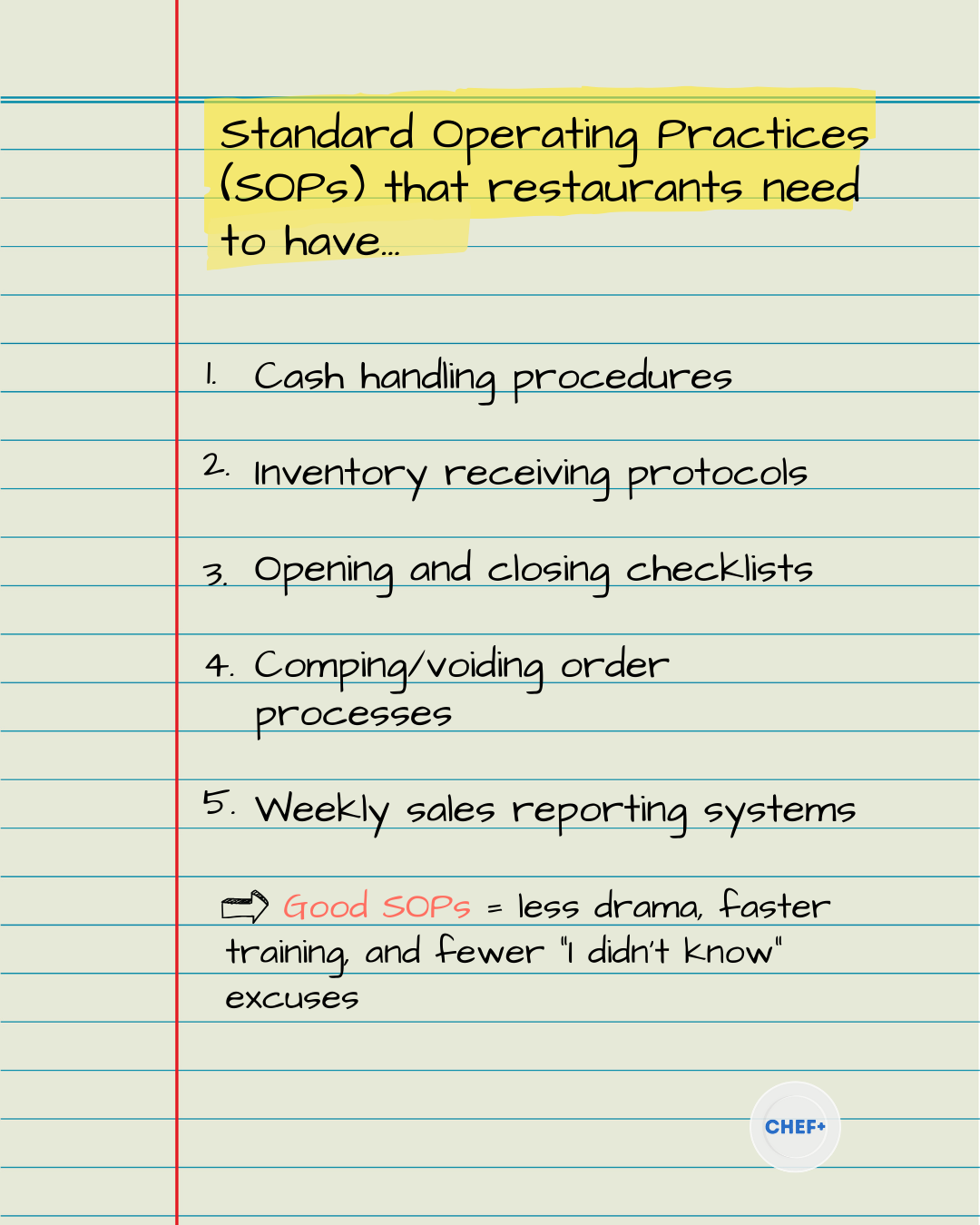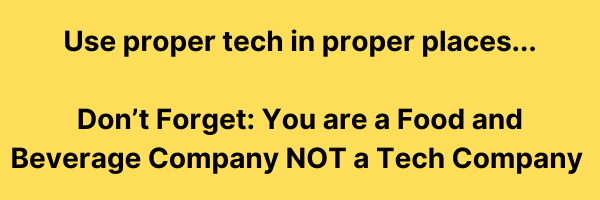5 Control Systems You Need To Stop Profit Leaks
The Busy Owner's Guide to Keeping More Profit – Part 2
Where Your Money Goes (And How to Keep More of It in Your Pocket)
Welcome back! This one's for the owner who read Part 1 and thought, "Great, now I know where my money's going—but how do I actually fix it?"
In Part 1 of this guide, we uncovered the most common profit leaks in food and beverage businesses—inventory waste, staffing inefficiencies, POS vulnerabilities, supplier overcharges, and marketing that doesn't move the needle.
The real kicker? Most of these problems aren't obvious until your profit margin is already squeezed tight.
Today, we're fixing that.
The topic of Control Systems is something I am extremely passionate about because I have lived on BOTH sides of it:
I struggled in the early years of my rapidly growing business WITHOUT good (or in some cases ANY) control systems and when I was ready to sell my business for a hefty profit I was running a very busy (but very smooth) business WITH great control systems and my mental space could not have been different.
What Are Control Systems?
Control systems are the invisible guardians of your restaurant's profitability, working behind the scenes even when you're not there to supervise every detail.
Think of them as your restaurant's automatic profit protection plan.
Two Essential Control Systems Every Restaurant Needs:
1. Internal Controls: Safeguard Your Assets
These systems prevent theft, catch errors, and eliminate costly sloppiness
They protect your cash, inventory, and supplies from walking out the door
2. External Controls: Maximize Your Time & Profit
These are your consistent, documented processes for critical operations
They ensure reliable ordering, standardized training, efficient scheduling, and accurate reporting
Together, these systems deliver one powerful benefit: they give you control without requiring your constant presence.
In the next section, we'll explore five fundamental control systems that effectively manage both internal and external controls. Once these are established, you can fine-tune additional systems based on whether your business struggles more with internal asset protection or external operational efficiency.
The 5 Core Control Systems Every F&B Business Needs
1. Inventory Management That Doesn't Suck Your Time
Bad inventory practices = lost cash. Full stop.
You don't need a complicated spreadsheet or expensive software. You need consistency.
What to implement:
Weekly counts of high-cost items (protein, dairy, alcohol)
Monthly full inventory with clear categories
Par levels, so you're never guessing how much to order
Waste logs to track what's getting tossed (and why)
FIFO system (First In, First Out) for freshness and cost control
Par levels don't just prevent over/under-prepping—they create a shared goal for your team. When everyone knows "we need this much product to succeed tonight," they work together toward that target, building both profit and team morale.
📊 Bonus tip: Choose a POS system that integrates with your inventory management to save you time and reduce transcription errors from paper to spreadsheet.
2. Financial Controls That Keep You in the Know
If you're still relying on your gut or only looking at your numbers once a month—that's a problem.
Put these in place:
Daily sales reconciliation – match cash, credit, and POS reports
Manager approval for discounts, voids, and comps
Weekly financial check-ins – even 15 minutes can reveal trends
Segregation of duties – no one person should control sales, cash, and deposits
Surprise cash counts – accountability keeps everyone honest
💡 Tip: Don't be scared to check your numbers—it's the fastest way to peace of mind.
Honestly, each of these controls deserves its own dedicated article—they're THAT important!
This is YOUR money we're talking about.
Getting customers through the door is hard enough; once they're spending, your business should have rock-solid systems in place to prevent mistakes, catch errors, and ensure that everyone handling cash is both accountable and trustworthy.
3. Labour Management Solutions
In the last post, I mentioned that labour is your biggest controllable expense—and the most common profit leak. I also shared how I successfully optimized my schedule by cross-training staff and keeping everyone productive during slow periods, ensuring we had all-hands-on-deck when rushes hit. This wasn't an overnight success but a process of continuous refinement. Here's how I did it:
Key labour controls to implement:
Schedule based on historical sales (not gut feelings)
Cross-train staff so you can flex roles during rushes or call-outs
Implement time tracking (you need a punch-in/punch-out system—having staff try to remember their hours at week's end will ALWAYS cost you more)
Track labour cost as a % of sales weekly – aim for 30–35% or lower
Set performance metrics – like sales per labour hour or average check size per server
📉 Reality check: Overstaffing by just one person for four hours a day = thousands in lost profit over a year.
Ready to Master Your Labour Costs?
This is maybe the most challenging and most critical work you will do in your business…and it can feel overwhelming!
Let my years of restaurant experience guide you toward a truly profitable labour schedule.
I'm currently accepting a limited number of new clients for my labour optimization program. My clients consistently achieve the coveted double-digit profit margins that most restaurants only dream about.
Is This Right For You?
If you're tired of working 70+ hours while watching your profits disappear, let's talk. I offer a free, no-obligation consultation to discuss your specific labour challenges and determine if we're a good fit to work together.
Click the Button Above to Book a 30-minute Profit Strategy Session
During our call, we'll discuss your day-to-day challenges and create a clear path to transform your restaurant from busy-and-broke to prosperous-and-profitable.
4. SOPs (Standard Operating Procedures) That Actually Get Used
Not the dusty binder kind.
The kind that make day-to-day tasks easier, faster, and more consistent. Good SOPs follow an ongoing cycle: implement, evaluate, follow-up, update, refine—then repeat.
Just posting a checklist that gets mindlessly checked off by a half-asleep opener or a closer desperate to leave does NOTHING for your business.
The right approach:
Use a NEW sheet or whiteboard EACH week—adding and subtracting items based on what's working and what areas need attention. Clean behind the coolers Monday last week? Let's wash the outside of the coolers top-to-bottom this week. Keep your staff engaged by preventing checklist autopilot.
Where to start with effective SOPs:
Cash handling procedures
Inventory receiving protocols
Opening and closing checklists
Comping/voiding order processes
Weekly reporting systems
🎯 Result: Good SOPs = less drama, faster training, and fewer "I didn't know" excuses.
I can't count how many times I've confronted an employee with a "completed" checklist only to point out multiple tasks that were still uncompleted BUT were checked off nonetheless.
This type of documentation gives you control—either to coach the employee toward improvement or to build the case for termination if necessary.
Pro tip: Make your SOPs visual. Use bullet lists, diagrams, photos, or videos—whatever helps your team follow procedures correctly without guessing.
5. Smart Tech That Saves Time and Closes Loops
No need to overcomplicate this one.
Start with the basics, what you're comfortable with, and make it work for you.
This doesn't mean avoiding growth—you DID decide to open a business, so wading into uncertainty should be expected. But there's an important distinction to remember: you run a customer service-based business, NOT a tech company.
Use proper tech in proper places based on your comfort level, your staff's abilities, and what actually helps rather than what's just consuming time for technology's sake.
My recommended tech stack:
POS system that integrates with inventory + accounting
Cloud-based accounting software (e.g., QuickBooks, Xero)
Scheduling + time tracking app (if your POS doesn't include this) (e.g., 7shifts, Homebase)
Digital checklists and SOPs (e.g., Google Docs, Google Sheets)
🔄 Key benefit: When your systems talk to each other, you stop being the glue holding everything together.
Feeling overwhelmed?
If you haven't implemented any SOPs or use minimal tech in your business, start small with these manageable steps:
Implement a weekly inventory count with a clear tracking sheet
Set one recurring financial check-in per week—15 minutes max
Audit one supplier invoice each week—look for price creep or errors
Add one SOP to a shared folder your team can access
Pick one staff metric to track (like avg. check size)
Small moves. Big impact.
Why Control Systems = Freedom
This isn't about turning your café into a corporate chain.
It's about building a business that supports your life—instead of draining it.
I could talk for hours about the mental clarity I gained after investing time upfront to build proper control systems for my business. Good employees will help refine and improve these systems, while those problematic staff members quickly stand out when they don't conform to your clear, actionable expectations.
I'll be writing a dedicated article on this powerful clarity soon, but here's what effective control systems truly give you:
✅ Confidence in your numbers
✅ Freedom to take a weekend off
✅ Higher profit without needing more sales
✅ Team accountability that doesn't rely on your presence
✅ A business that's actually worth something if you ever sell
When your restaurant runs on systems rather than your constant presence, you've built something truly valuable—both financially and for your quality of life.
You Don't Have to Build It Alone
Let's be real—putting these systems in place while you're running a busy kitchen is tough. That's why most owners never get around to it.
That's where I come in.
I work with food and beverage owners to:
Build practical control systems that actually get used
Find and plug the biggest leaks in weeks, not months
Give you clarity and control—without drowning you in spreadsheets
I ran a successful, profitable business for over a decade, consistently achieving double-digit profit margins. Now, I help other owners do the same by bringing proven systems and hands-on experience to plug the revenue leaks in their operations.
If you're ready to take control of your business, book a free 30-minute consultation by clicking the link HERE, or send me an email with any questions, comments or concerns.
Let's talk about how we can work together to help you become the business owner you've always envisioned, rather than feeling like a slave to your own business.
✅ Final Thoughts
Running your business shouldn't require burnout to break even.
And profitability doesn't have to come from raising prices or squeezing your staff—it comes from plugging the leaks and protecting what you already earn.
Start small.
Build one system at a time.
And don't be afraid to ask for help.
Your future self—and your bottom line—will thank you.
Thanks for reading Part 2 of The Busy Owner's Guide to Keeping More Profit in Your Pocket.
If this helped, I'd love it if you subscribed to this Substack or shared it with another busy, hard-working owner who deserves to keep more of what they earn.
Thanks for reading Plating Profit! Subscribe for free to receive new posts and support my work.
-Steven








